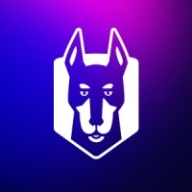

Fortify on Demand and Snyk are application security solutions. Snyk appears to have an edge due to its speed, modern approach, and integration capabilities, making it favorable in continuous development environments.
Features: Fortify on Demand is known for its broad language support, extensive reporting, and detailed insights. Snyk offers real-time vulnerability detection, compatibility with open-source platforms, and seamless integration with popular development tools.
Room for Improvement: Fortify on Demand could enhance scanning speed, simplify complexity, and improve its setup process. Snyk can work on expanding its depth of coverage, improve documentation, and further enhance its flexible interface.
Ease of Deployment and Customer Service: Fortify on Demand requires significant setup time but offers thorough deployment with mixed customer service feedback. Snyk is easier to implement, integrating smoothly with existing systems, and is noted for a user-centric approach to customer service.
Pricing and ROI: Fortify on Demand involves significant initial setup costs but offers long-term ROI with in-depth analysis. Snyk provides a flexible pricing model, with a rapid identification of vulnerabilities resulting in a swift return on investment.


Fortify on Demand is a web application security testing tool that enables continuous monitoring. The solution is designed to help you with security testing, vulnerability management and tailored expertise, and is able to provide the support needed to easily create, supplement, and expand a software security assurance program without the need for additional infrastructure or resources.
Fortify on Demand Features
Fortify on Demand has many valuable key features. Some of the most useful ones include:
Fortify on Demand Benefits
There are several benefits to implementing Fortify on Demand. Some of the biggest advantages the solution offers include:
Reviews from Real Users
Below are some reviews and helpful feedback written by PeerSpot users currently using the Fortify on Demand solution.
Dionisio V., Senior System Analyst at Azurian, says, "One of the top features is the source code review for vulnerabilities. When we look at source code, it's hard to see where areas may be weak in terms of security, and Fortify on Demand's source code review helps with that." He goes on to add, “Another reason I like Fortify on Demand is because our code often includes open source libraries, and it's important to know when the library is outdated or if it has any known vulnerabilities in it. This information is important to us when we're developing our solutions and Fortify on Demand informs us when it detects any vulnerable open source libraries.”
A Security Systems Analyst at a retailer mentions, “Being able to reduce risk overall is a very valuable feature for us.”
Jayashree A., Executive Manager at PepsiCo, comments, “Once we have our project created with our application pipeline connected to the test scanning, it only takes two minutes. The report explaining what needs to be modified related to security and vulnerabilities in our code is very helpful. We are able to do static and dynamic code scanning. When we are exploring some of the endpoints this solution identifies many loopholes that hackers could utilize for an attack. This has been very helpful and surprising how many vulnerabilities there can be.”
A Principal Solutions Architect at a security firm explains, “Its ability to perform different types of scans, keep everything in one place, and track the triage process in Fortify SSC stands out.”
PeerSpot user Mamta J., Co-Founder at TechScalable, states, "Almost all the features are good. This solution has simplified designing and architecting for our solutions. We were early adopters of microservices. Their documentation is good. You don't need to put in much effort in setting it up and learning stuff from scratch and start using it. The learning curve is not too much."
Snyk is a user-friendly security solution that enables users to safely develop and use open source code. Users can create automatic scans that allow them to keep a close eye on their code and prevent bad actors from exploiting vulnerabilities. This enables users to find and remove vulnerabilities soon after they appear.
Benefits of Snyk
Some of the benefits of using Snyk include:
Reviews from Real Users
Snyk is a security platform for developers that stands out among its competitors for a number of reasons. Two major ones are its ability to integrate with other security solutions and important insights that it can enable users to discover. Snyk enables users to combine its already existing security features with those of other solutions to create far more robust and flexible layers of security than what it can supply on its own. It gives users the ability to dig into the security issues that they may experience. Users are given a clear view of the root causes of these problems. This equips them to address the problem and prevent similar issues in the future.
Cameron G., a security software engineer at a tech company, writes, “The most valuable features are their GitLab and JIRA integrations.The GitLab integration lets us pull projects in pretty easily, so that it's pretty minimal for developers to get it set up. Using the JIRA integration, it's also pretty easy to get the information that is generated, as a result of that GitLab integration, back to our teams in a non-intrusive way and in a workflow that we are already using. Snyk is something of a bridge that we use; we get our projects into it and then get the information out of it. Those two integrations are crucial for us to be able to do that pretty simply.”
Sean M., the chief information security officer of a technology vendor, writes, "From the software composition analysis perspective, it first makes sure that we understand what is happening from a third-party perspective for the particular product that we use. This is very difficult when you are building software and incorporating dependencies from other libraries, because those dependencies have dependencies and that chain of dependencies can go pretty deep. There could be a vulnerability in something that is seven layers deep, and it would be very difficult to understand that is even affecting us. Therefore, Snyk provides fantastic visibility to know, "Yes, we have a problem. Here is where it ultimately comes from." It may not be with what we're incorporating, but something much deeper than that."
We monitor all Application Security Tools reviews to prevent fraudulent reviews and keep review quality high. We do not post reviews by company employees or direct competitors. We validate each review for authenticity via cross-reference with LinkedIn, and personal follow-up with the reviewer when necessary.